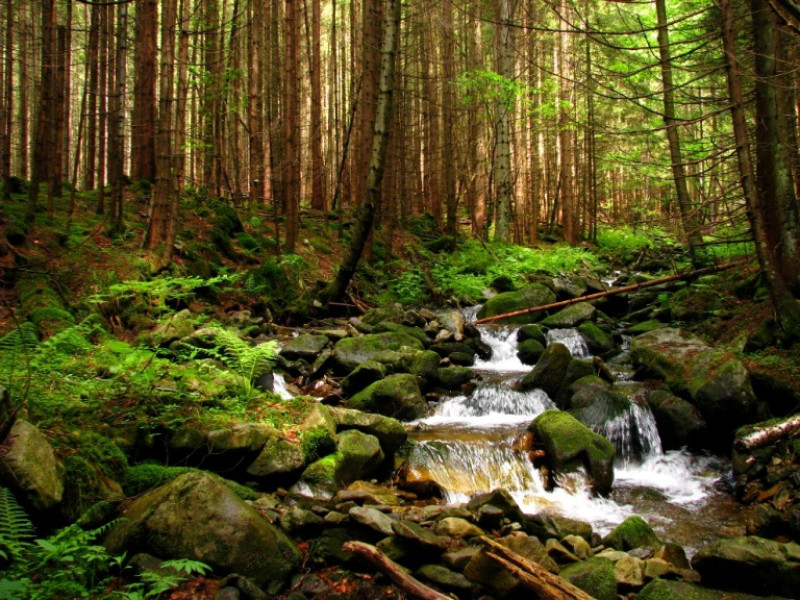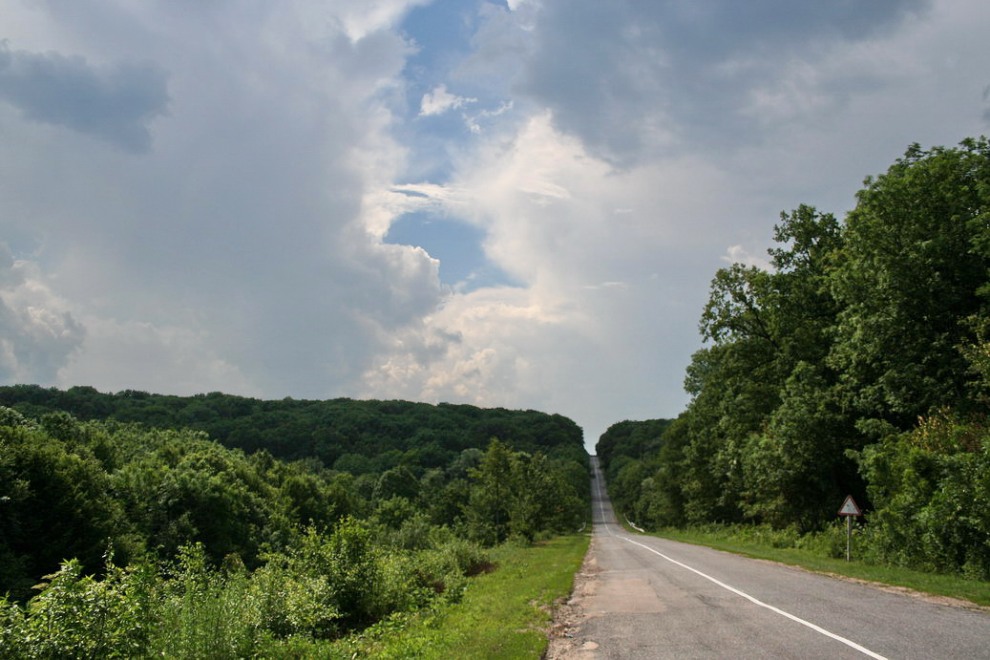According to official data, almost 16% of Ukraine's land is covered by forests. If we compare it with European countries, for example, Poland, where the forest cover is 28%, or France - 31%, it turns out that the Ukrainian indicator is the smallest. But considering that the criteria for such an assessment may be inaccurate, and deforestation is increasing, the actual forest cover is even smaller. But there is also a pleasant fact: our forests occupy the first place in Europe in terms of diversity of biological species. You can see this for yourself and appreciate the green wealth of Ukraine by reading the description of the most fascinating forests of the country.
Beech forests of the Carpathians
This object is the only one included in the list of UNESCO natural heritage sites. And these are almost the only forests of Ukraine today that have not been touched by logging. Here the forest is in its original beauty, in the full sense of the word - we see not even rows of plantings, but green massifs of giants, in several tiers, centuries-old groves, with giant beeches that cannot be reached by one person, with piles of trunks that have outlived their useful life. The UNESCO list includes five natural massifs of the Carpathian Biosphere Reserve and one - the Uzhansky National Nature Park. And in Slovakia you can find three more sections of the forest of this object.
You can find more detailed information about these virgin forests by visiting the website of the Carpathian Biosphere Reserve.
Carpathians, spruce forests
Spruce forests are not so widely known to the public. In principle, they do not fall under the objects of economic activity, as they grow high above sea level, at least 1200 m. These are not the spruce forests that we are used to, artificially planted at lower altitudes, impoverished and cramped. The scope of these giant spruces is impressive. Here you can see the continuation of life, the beginning of a new young one from an old one that has outlived its age: rows of a new generation stretch upward from the moss-covered trunks of fallen trees. On the trunks you can see numerous holes - this is the work of the three-toed woodpecker, a unique bird that lives only here. In summer, spruce forests delight with the abundance of blueberries and mushrooms.
Polissya
Tsumanskaya Pushcha
In the Kivertsivskyi district, Volyn region, in the national park of the same name, one of the most famous forests of Polissya is located. The most remote and dense forests were called forests. In general, coniferous forests are characteristic of Polissya, but broad-leaved stands prevail here. In this park, you can admire not only the age-old forest giants, but also the bison - after all, this is almost the only forest in Ukraine where we can see these unique animals in their natural habitat. It is easiest to do this near the feeding grounds, in winter. There are also many other animals in the forest - roe deer, wild boars, deer.
You can get here in the following ways: by train from Kyiv to the regional center of Kivertsi, then on foot to the forest itself, or by bus or train to the city of Tsuman.
Poyaskivsky Forest
It vaguely resembles the forests of the Carpathians. This is the oldest ancient forest of Polissya, it grows in the Olevsky district, Zhytomyr region. At one time, a decree from 1924 prohibited any logging in it in order to monitor how the development and restoration of the forest would proceed in the reserve regime. There are individual loggings by poachers, but in general the forest can be considered a beautiful illustration of the boundless beauty of the forests of Polissya, very close to primeval forests. The only sad thing is that today they have started illegally extracting amber within the reserve.
How to get there: by car, bus or taxi - from Olevsk to the village of Shebedykha, then 5 km on foot, through the forest to the reserve. Or by train to the station. Poyasky, through Shebedykha, along an embankment road 15 km.
Dzvinkovsky Forest
This is another one of the oldest forests in Polissya, its individual pines are almost 200 years old, and their girth is more than 3.5 m. Considering that most pine forests are subject to felling before reaching a hundred years of age, this forest massif is unique. But recently the forest has begun to dry up, so intensive mass felling will soon begin. But you can still see the two-hundred-year-old beauties in all their glory, if you hurry.
You can get there by: bus route No. 778, metro station "Nyvky" - village Dzvinkove, then on foot through the forest; or bus route No. 791, metro station "Exhibition Center" - village Plesetske, then on foot through the field through the forest.
Forest-steppe
Black Forest
In Znamensky district, Kirovograd region, one of the largest southern forests of Ukraine is located. The combination of fertile southern soils and mild climate has grown local oaks into giants. To enjoy all the charms of the Black Forest, it is worth coming here in April: the still bare branches of giant oaks are pierced by rays of light, dense flowers of cornflowers and various herbs spread across the ground, covering it with an incredible carpet. The more leaves there are on the branches of the trees, the thicker the twilight in the forest becomes. Probably, that is why it is called Black. In 1917-1921, during the liberation struggle, this place was in the center of the so-called Black Forest Republic - a territory controlled by Ukrainian insurgents.
You can get there by train/bus to Znamenka station, then on foot. Overnight stay in tents.
Kaniv, Grabowskie groves
Today, you can still see photographs of the gray past, where the Kaniv Mountains - the hills above the Dnieper, running in a strip - were used as pastures and therefore were always without grass. But over time, when grazing stopped, and most of the mountains entered the Kaniv Reserve, scientists were able to observe the natural regeneration of the forest, practically from scratch. And now, when the regeneration has been going on for almost a hundred years, amazing hornbeam green forests have grown on the slopes, in which the sound of an axe or a saw has never been heard. The network of ravines of the Kaniv district, the largest in Europe, adds even more colorfulness to its relief.
Between the slopes of deep ravines, you feel like you are somewhere in the Carpathian or Crimean mountains.
You can get there like this: bus to Kanev, then a suburban bus to Tarasova Gora, then walk to the reserve (15 minutes is enough).
Crimea
Beech forest, foothills of Karatau Mountain
Regardless of whose rule Crimea is now under, it was and is a picturesque part of Ukraine, and therefore we will also remember the Crimean forests, for example, the beech forest in the south of Karabi-Yaila, at the foot of the now inactive Karatau volcano. The beeches here have unusual shapes, they have grown to an unprecedented width and are very branched. This gives the forest its uniqueness and popularity. Perhaps the shape of the trees was influenced by the fact that the place where they grew was once a pasture.
How to get there: These trees are located in the forest next to the so-called "Round Meadow", on the route from Karabi-Yaila to Tyrke-Yaila.
Based on materials from igotoworld.com










Write a comment